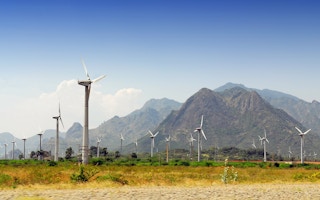As the 1st October deadline approaches for submissions of countries’ Intended Nationally Determined Contributions (INDCs), all eyes are set on India, especially after other big emitters including China and the US have already submitted their proposals. With China having agreed to cap its absolute emissions in 2030, there is much speculation on what India will promise.
To continue reading, subscribe to Eco‑Business.
There's something for everyone. We offer a range of subscription plans.
- Access our stories and receive our Insights Weekly newsletter with the free EB Member plan.
- Unlock unlimited access to our content and archive with EB Circle.
- Publish your content with EB Premium.
In recent interviews, India’s Minister for Environment, Forests and Climate Change Prakash Javadekar has made it clear that under no circumstance will India agree to declare an emissions cap. Indications suggest that India’s submission might include two emissions reduction targets—one that will be achieved with unilateral efforts; and another more ambitious target that will be depend on whether international carbon finance is made available to fund the country’s emissions reduction activities.
An INDC by India which reflects such a policy stance is highly plausible, and one need only look at negotiations on limiting emissions of hydrofluorocarbon gases (HFCs), currently in progress under the framework of the Montreal Protocol for precedent. The Montreal Protocol is considered to be one of the most successful environmental treaties and is the first treaty under the United Nations to have achieved universal ratification. It has successfully reduced emissions of dangerous ozone depleting substances (ODS) by imposing restrictions on production and consumption of these gases and providing finance to developing countries for implementing the required changes through the Multilateral Fund (MLF).
In recent years, the Montreal Protocol parties have started negotiating whether emissions of HFCs can be restricted under its gambit, since these gases have grown in popularity as substitutes of ODS phased out by the protocol. Parties such as US, Canada & Mexico, the European Union, and Micronesia have released proposals of their own to negotiate a long term schedule for gradually reducing the production and consumption of HFCs in both developed and developing countries; albeit with more lenient timelines for the developing country parties. For example, the proposal by US, Canada & Mexico proposes that developed countries reduce HFC production and consumption to 15 per cent of the baseline levels by 2035 whereas developing countries can do so by 2045.
India has strongly opposed any attempts to even consider including HFCs in the negotiations, claiming that because HFCs are a greenhouse gas, they must therefore be mitigated under the climate change negotiation framework. India also argues that developing countries have only recently set up infrastructure for production and consumption of HFCs, and replacing this infrastructure would impose a significant financial burden on these countries.
However, in February this year, India changed its strategy by suggesting a proposal of its own to phase out HFC production and consumption. India’s proposal differs from the others in two key aspects. First, it increases the grace period given to developing countries for implementing restrictions on HFC production and consumption to 15-years, as compared to the 10-year grace period offered by the other proposals. Second and more importantly, it calls for “full conversion costs” to be financed through the Multilateral Fund, whereas other proposals call for financing only the “incremental costs” as it has always done under its mandate.
These full conversion costs, as requested by India, would include compensation for profits lost from the closure of existing HFC facilities, as well as full conversion costs for setting up production and servicing infrastructure for alternatives that are environmentally friendly but are either flammable, toxic or both. Conversely, calculation of incremental costs would involve deducting savings from installation of new equipment if the savings were to occur irrespective of the environmental benefits. As a result, India’s proposal may lead to additional financing commitments worth billions of dollars from MLF’s donor countries.
Interestingly, by putting this proposal on the table at the Montreal Protocol negotiations, India has been able to shed its tag as a negotiation blocker and has shifted the ball into the developed countries’ court. It is expected that India’s upcoming INDC, which is basically a mitigation proposal for greenhouse gas emissions, will play a similar role in India’s negotiating stance at the upcoming climate negotiations at COP21 in Paris.
“
Thus, the INDC is a chance for India to project itself as a progressive stakeholder that is willing to play an ambitious role in managing carbon emissions, should developed countries adhere to their promise to fund developing nations in their efforts.
The first 20 years of the climate negotiations saw China and India arguing that the principle of Common but Differentiated Responsibilities (CBDR) absolved them and other developing countries from emissions reduction obligations. While China has proceeded to sign an agreement with the US in 2014 to slow and stop its emissions by 2030, India has transitioned into a leader for countries that continue to champion CBDR, and demand increased mitigation and finance from developed countries before they are asked to undertake similar action.
Thus, the INDC is a chance for India to project itself as a progressive stakeholder that is willing to play an ambitious role in managing carbon emissions, should developed countries adhere to their promise to fund developing nations in their efforts. There is no doubt that India will require significant financing to achieve its target of a higher rate of GHG emission reductions. A 2014 study by India’s Planning Commission estimates that funding of 834 billion US dollars at 2011 prices would be required to cut India’s emission intensity by 42 per cent from 2007 levels.
Already, a number of policy studies have been commissioned by various agencies to analyse how the institutional framework in India could be strengthened or redeveloped to effectively tap finance from the Global Climate Fund (GCF). In addition, several industry associations are gearing up to identify sectoral-level emissions reduction opportunities and funding requirements. The pace at which awareness is growing in regard to international climate funding is reminiscent of the period in the early 2000s when Indian companies sensed a business opportunity in the Kyoto protocol’s Clean Development Mechanism and successfully leveraged it to fund more than 2,000 emissions reduction projects.
All analysis aside, it is unlikely that India’s commitments (with or without climate finance) will make any major impact on the aggregated effect of the commitments. Gauging from the current submissions, reductions achieved by 2030 would amount to around 3.5 to 4.0 billion tonnes of CO2, which is only about one-fifth of the 19 billion tonnes’ reduction required to achieve the 2°C target. On top of that, INDCs are commitments that countries feel are fair, equitable and considerate of their national circumstances. The stance held by Javadekar and even Prime Minister Modi make it obvious that for India, fairness means equitable access to the historical global carbon budget, and that the country is only just beginning to claim its due share.
Gautam Jindal is a research associate at the National University of Singapore’s Energy Studies Institute. This post was written exclusively for Eco-Business.











